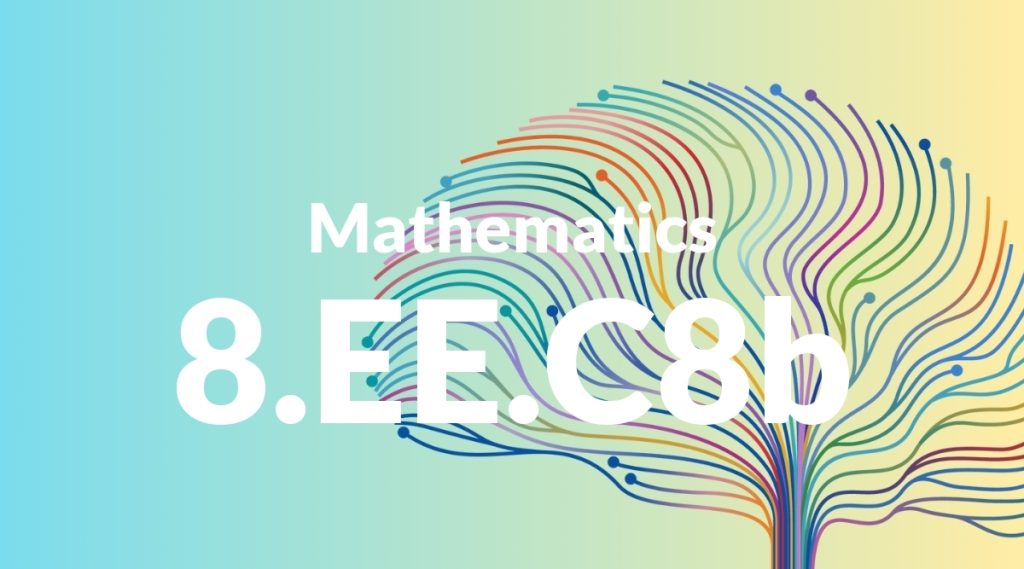Standard: 8.EE.C8b – Solve systems of two linear equations in two variables algebraically, and estimate solutions by graphing the equations. Solve simple cases by inspection. For example, 3x + 2y = 5 and 3x + 2y = 6 have no solution because 3x + 2y cannot simultaneously be 5 and 6.
Grade level: Grade 8
Subject: Mathematics
Domain: Expressions & Equations
Teacher Overview
This standard focuses on solving systems of two linear equations in two variables, both algebraically and by graphing. It emphasizes understanding when systems have no solution, one solution, or infinitely many solutions. Mastery of this standard is crucial as it forms the foundation for more advanced algebraic concepts and real-world problem-solving. Students should be comfortable with solving single linear equations, graphing linear equations, and basic algebraic manipulations. They should also have a conceptual understanding of what it means for two lines to intersect, be parallel, or coincide.
After mastering this standard, students will be able to solve more complex systems of equations, including nonlinear systems, and apply these skills in higher-level mathematics and various real-world contexts.
Common Misconception 1
A common misconception is that if the coefficients of x and y are the same in both equations, the system will always have a solution. This is incorrect because while the lines may have the same slope, they may be parallel and never intersect if the constants are different.
Intervention 1
To address this misconception, use graphing to show that parallel lines (same coefficients but different constants) do not intersect, hence there is no solution. Reinforce this concept with multiple examples and visual aids.
Common Misconception 2
Another misconception is that estimating solutions by graphing is always accurate. This is not true because graphing can lead to approximate solutions, especially if the scale is not precise or the intersection point is not clear.
Intervention 2
Highlight the limitations of graphing and emphasize the importance of algebraic methods for obtaining precise solutions. Provide practice problems that require both graphing and algebraic solutions to illustrate the differences.
Prerequisite Knowledge
Students should have a solid understanding of solving single linear equations, graphing linear equations on the coordinate plane, and basic algebraic manipulation skills.
Subsequent Knowledge
After mastering this standard, students will be able to tackle more complex systems of equations, including those involving nonlinear equations, and apply these skills in higher-level mathematics and real-world problem-solving scenarios.
Instructional Activities
- Graphing systems of equations on graph paper and identifying solutions
- Using substitution and elimination methods to solve systems algebraically
- Interactive online simulations for visualizing systems of equations
- Real-world problem-solving tasks involving systems of equations
- Collaborative group activities for solving and discussing different systems




